Written by: Emma Cyrus, Senior Copy, Content & Editorial Writer
Reviewed by: Cristina Chirila, Senior Interior Designer
Edited by: Zoona Sikander, Head of Content
Reading time: 6 minutes
Quick Summary: Hand-knotted Persian rugs represent centuries of artistic evolution, with master weavers tying up to one million individual knots per square metre in the finest examples. These masterpieces appreciate in value over time, particularly pieces from renowned centres like Tabriz and Isfahan, making them both aesthetic treasures and tangible investment assets. Quality indicators include knot density, natural dyes, and highland wool with high lanolin content that develops a beautiful patina with age. Unlike machine-made alternatives, authentic hand-knotted pieces feature deliberate imperfections that serve as the artisan’s signature, connecting modern owners to millennia-old traditions.
Table of Contents
When one speaks of luxury rugs, few traditions command the reverence and admiration that Persian rugs do. These extraordinary textiles represent not merely floor coverings, but rather cultural artefacts that embody centuries of artistic evolution and meticulous craftsmanship.
For the discerning homeowner seeking to infuse spaces with authentic character and refined luxury, understanding the distinguishing qualities of genuine hand-knotted Persian pieces becomes essential.
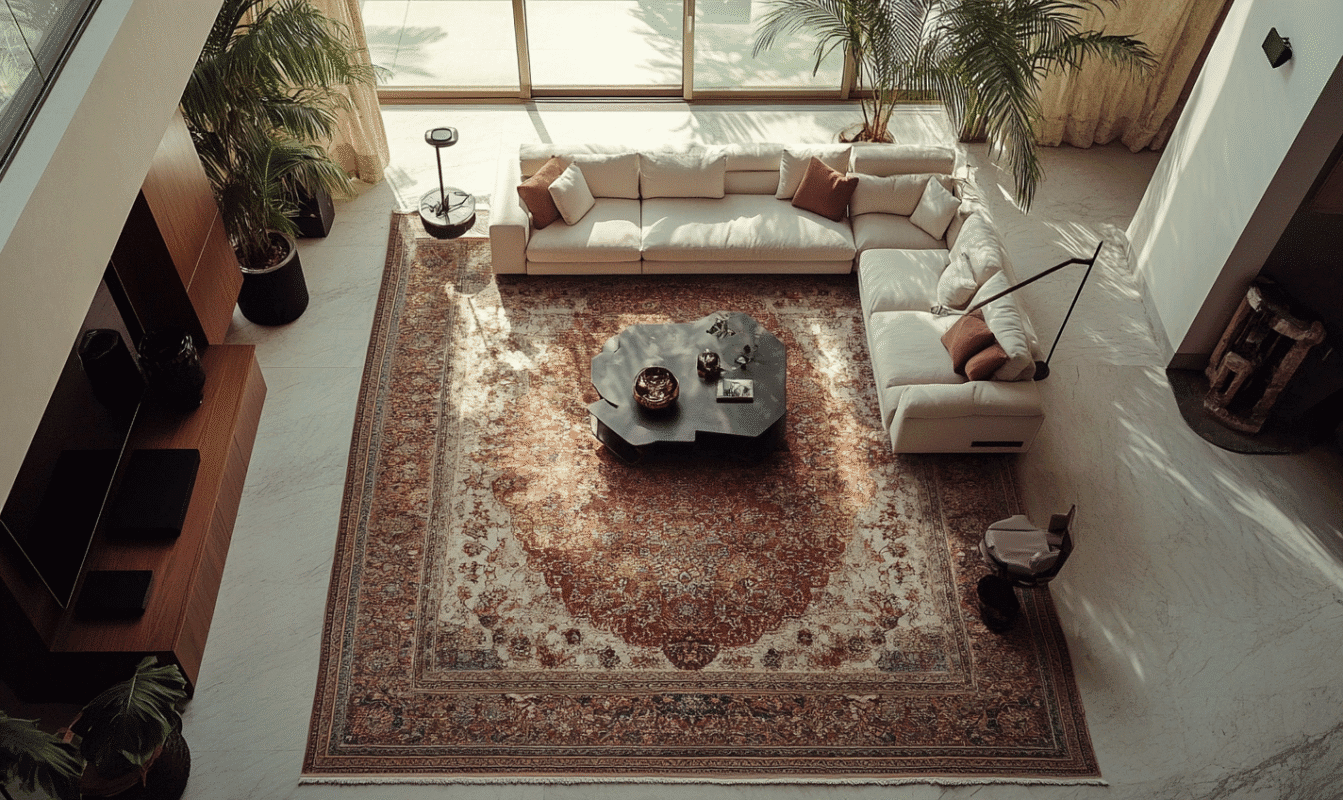
Decoding the Artistry of Hand-Knotted Excellence
The creation of authentic hand knotted Persian rugs remains largely unchanged over centuries, with techniques passed through generations of master weavers. This painstaking process begins with premium wool, silk, or occasionally cotton, selected for specific qualities that ensure both beauty and longevity.
What truly distinguishes these magnificent textiles is the knotting technique. Each knot is tied individually by hand around adjacent warp threads, creating the foundation for patterns of remarkable intricacy. A skilled artisan might tie between 8,000 and 10,000 knots per day, with the finest examples containing upwards of one million knots per square metre. This density directly correlates to the rug’s definition, durability, and value.
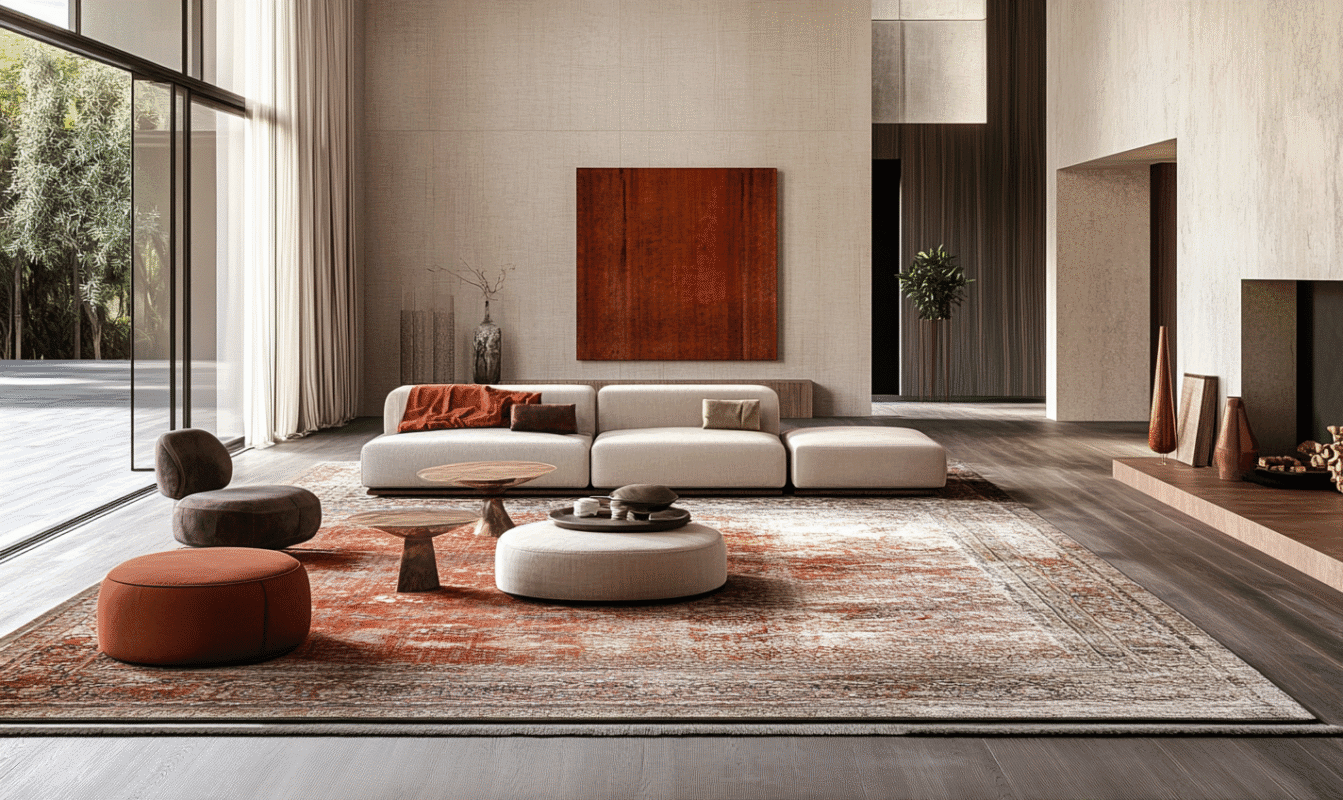
Upon inspection, the distinction between genuine hand-knotted pieces and their machine-made counterparts becomes immediately apparent. Machine-made versions cannot replicate the subtle variations and deliberate imperfections that authenticate hand-crafted pieces. These “perfect imperfections” are the artisan’s signature, connecting the modern owner to traditions dating back millennia.
Key Takeaway: Those subtle irregularities in your Persian rug aren’t flaws – they’re the weaver’s signature, proving authenticity whilst adding character no machine could replicate.
Distinguishing Quality in Persian Rugs
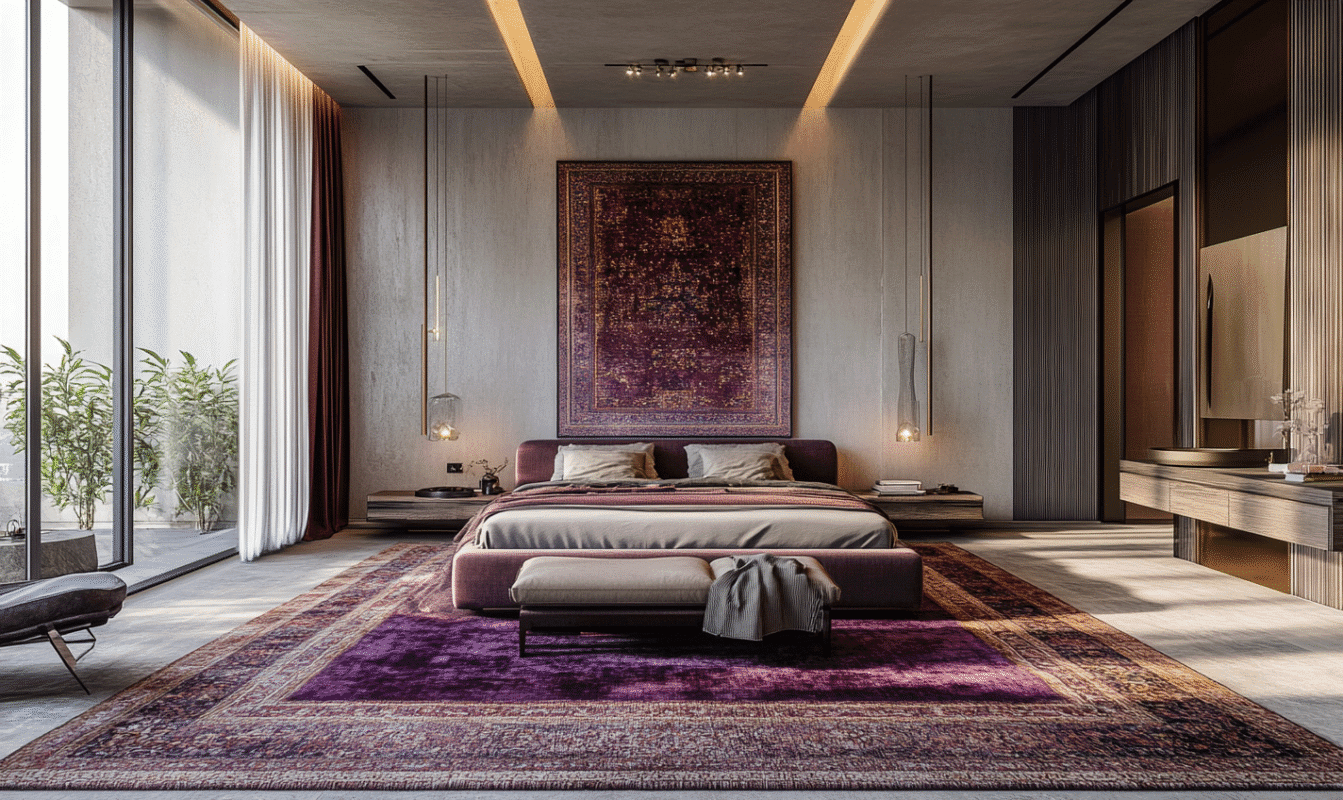
When evaluating Persian rugs, several factors determine exceptional quality:
Knot Density: This refers to the number of knots per square inch or square centimetre. Higher density allows for more intricate patterns and greater durability. When examining potential acquisitions, turn the rug over to inspect the knotting structure; greater density indicates superior craftsmanship.
Materials: The finest examples utilise highland wool with naturally high lanolin content, which provides exceptional resilience and lustre. Silk elements often accentuate specific design features, creating dimensional highlights that shift with changing light.
Dyes: Natural dyes derived from plants, insects, and minerals produce the rich, subtly variegated colours characteristic of superior pieces. These colours mellow beautifully with age, developing a patina that enhances rather than diminishes the rug’s beauty.
Symmetry and Design Integrity: While perfect symmetry is not expected due to the handcrafted nature, the overall design should maintain proportional harmony. The pattern should flow seamlessly from one element to the next, with borders framing the central motifs precisely.
For collectors in Dubai, where appreciation for exceptional craftsmanship runs deep, these quality indicators serve as crucial evaluation tools when building a collection of significance.
Key Takeaway: Turn any Persian rug over – if you can’t clearly see individual knots and the backing looks too uniform, you’re likely viewing a machine-made piece.
The Investment Value of Antique Hand Knotted Persian Rugs
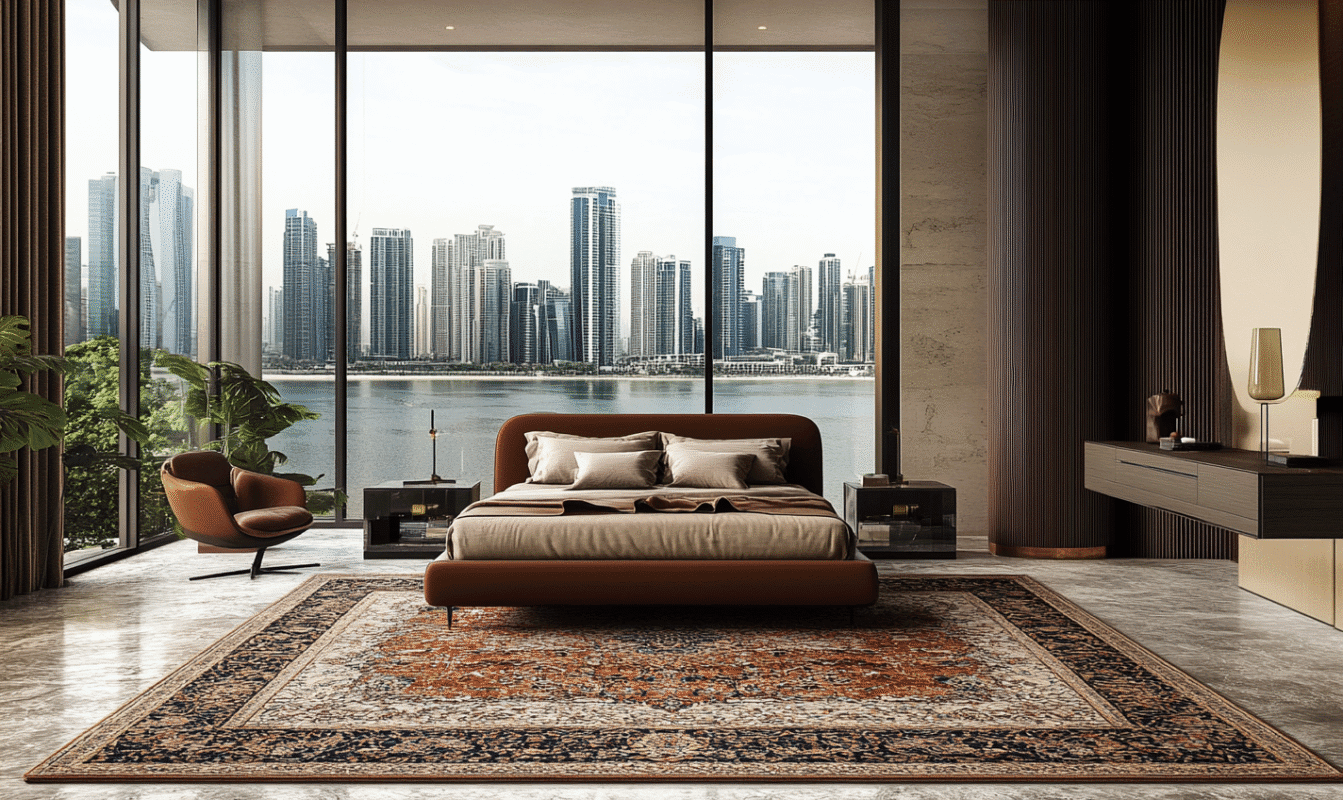
Antique hand knotted Persian rugs transcend mere decorative function, appreciating steadily in value while simultaneously enhancing the spaces they grace. Unlike many luxury purchases that depreciate immediately, these masterpieces often increase in worth, particularly those from renowned weaving centres such as Tabriz, Isfahan, Nain, and Qom.
Several factors influence investment potential:
Age and Condition: Pieces that have maintained their structural integrity and colour vibrancy despite their age command premium prices. The natural patina that develops over decades enhances rather than diminishes value.
Provenance: Documented history of ownership, particularly connections to notable collections or historical periods, significantly impacts valuation.
Rarity: Designs with unusual colour combinations, distinctive motifs, or exceptional technical achievements grow increasingly scarce, appreciating accordingly.
Artistic Merit: Beyond technical perfection, truly valuable pieces exhibit artistic innovation and aesthetic harmony that transcends their cultural context.
The appreciation trajectory for museum-quality pieces has consistently outperformed many traditional investment vehicles, making them not only objects of beauty but also tangible assets of considerable worth.
Key Takeaway: Museum-quality Persian rugs have consistently outperformed traditional investments – your floor covering could be your smartest asset allocation.
Vintage Hand Knotted Persian Rugs in Contemporary Design
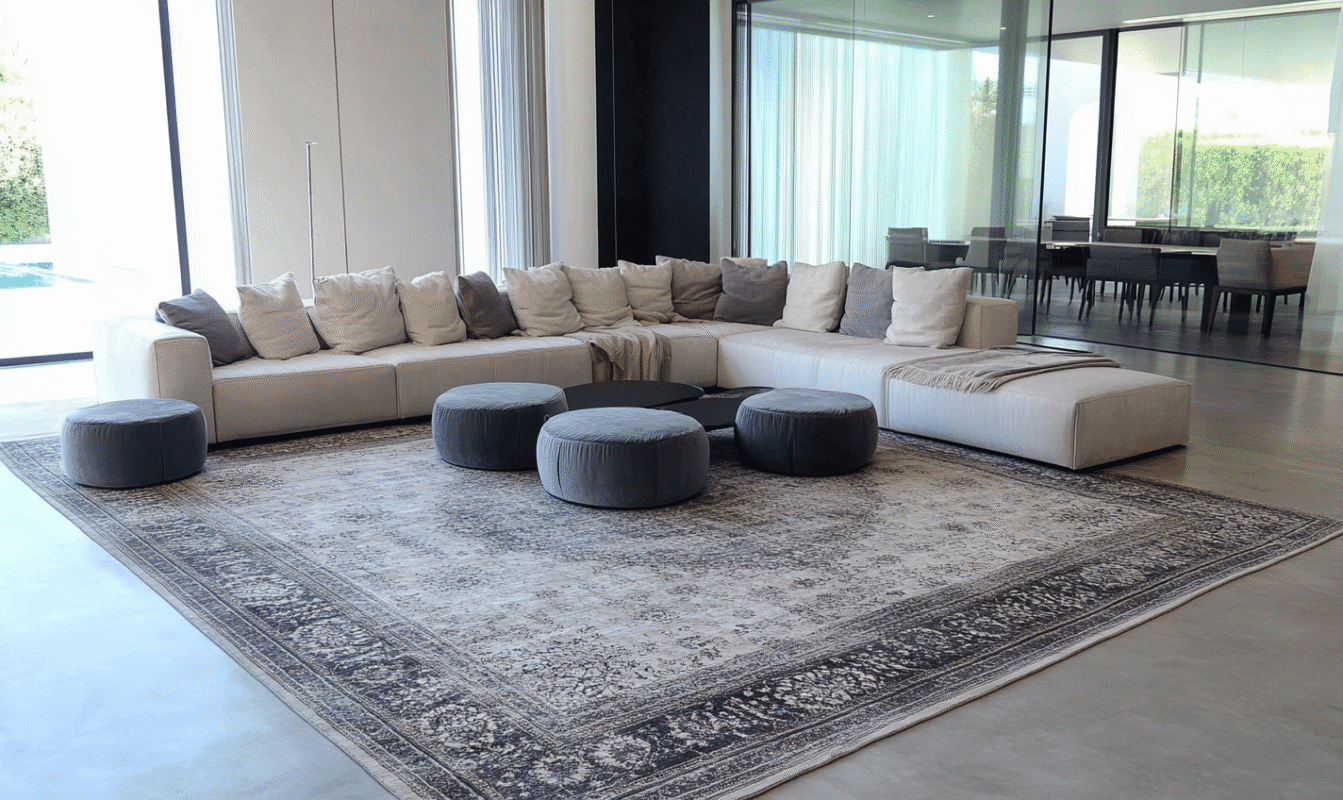
While vintage hand knotted Persian rugs are historical treasures, they possess remarkable versatility within contemporary settings. Their timeless aesthetic provides a sophisticated foundation for diverse design approaches:
Juxtaposition: The interplay between ancestral craftsmanship and clean, contemporary architecture creates compelling visual tension. A 19th-century Tabriz placed within minimalist surroundings allows both elements to shine without competition.
Colour Dialogue: The complex palette found in traditional Persian designs often contains subtle undertones that can be extracted and echoed throughout a space, creating cohesive yet layered colour stories.
Textural Dimension: In monochromatic schemes, the textural complexity of hand-knotted pieces adds necessary depth and interest without disrupting the restrained palette.
Dubai’s most impressive residences frequently showcase this balance between heritage and modernity, with statement Persian rugs anchoring spaces that might otherwise feel ephemeral or lacking in historical context.
Key Takeaway: A vintage Persian rug in a contemporary space doesn’t look outdated – it looks curated, adding soul to minimalist architecture.
Beyond Hand-Knotted: Understanding Hand Tufted Persian Rugs
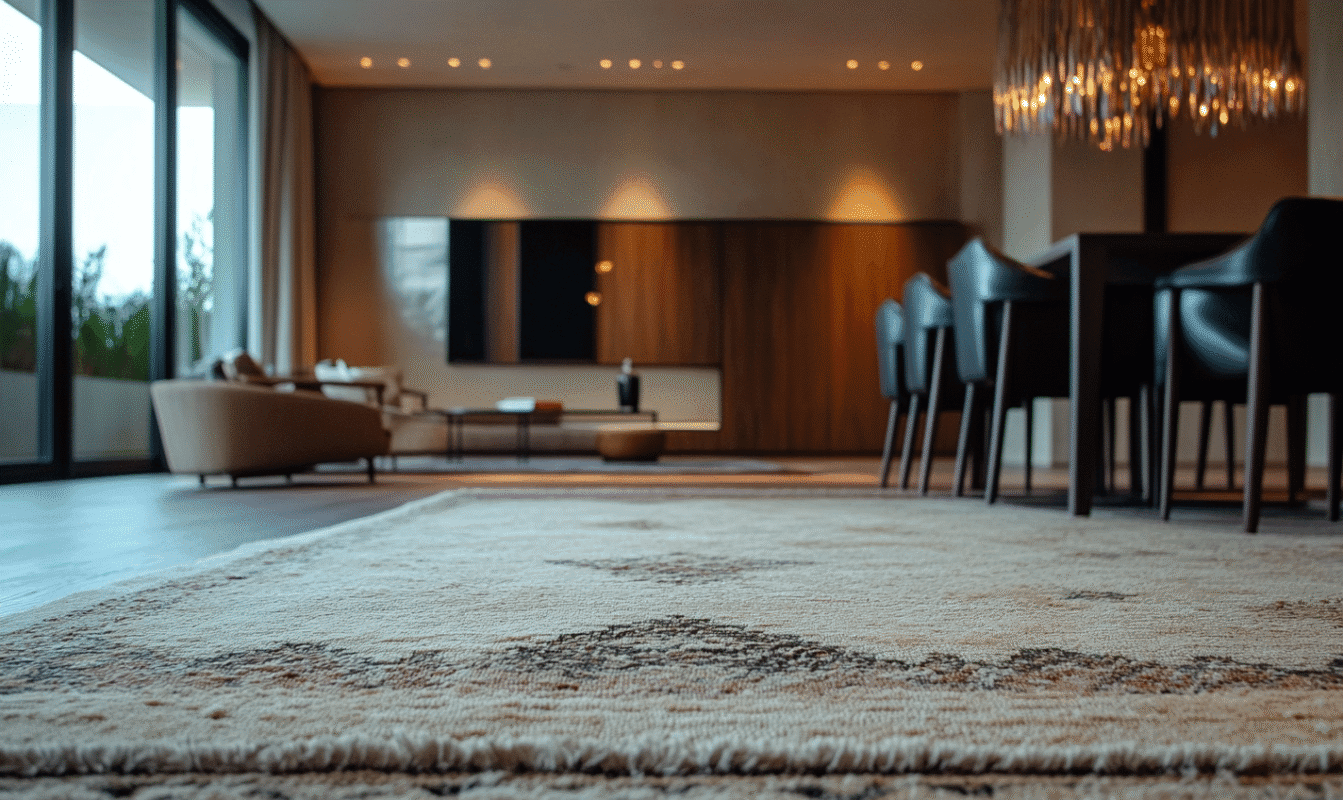
While hand-knotted pieces represent the pinnacle of the rugmaker’s art, hand tufted Persian rugs offer an alternative worth understanding. Created using a different technique, tufted rugs are made by punching wool or other fibres through a backing material using a handheld tool.
The primary distinctions include:
Creation Process: Hand-tufting requires significantly less time than hand-knotting, typically taking weeks rather than months or years to complete.
Structure: Tufted rugs feature a canvas backing glued to the pile, while knotted rugs integrate the pile directly with the foundation through individual knots.
Longevity: While quality tufted pieces can last decades with proper care, they generally cannot match the multi-generational durability of their knotted counterparts.
Investment Value: Hand-tufted pieces rarely appreciate significantly, functioning primarily as decorative elements rather than investment-grade assets.
For spaces where practical considerations take precedence over investment potential, quality hand-tufted options provide an accessible entry point to Persian design traditions.
Key Takeaway: Hand-tufted rugs are perfectly lovely for high-traffic areas where investment pieces might suffer – save your treasures for more protected spaces.
Care Considerations for Generational Treasures
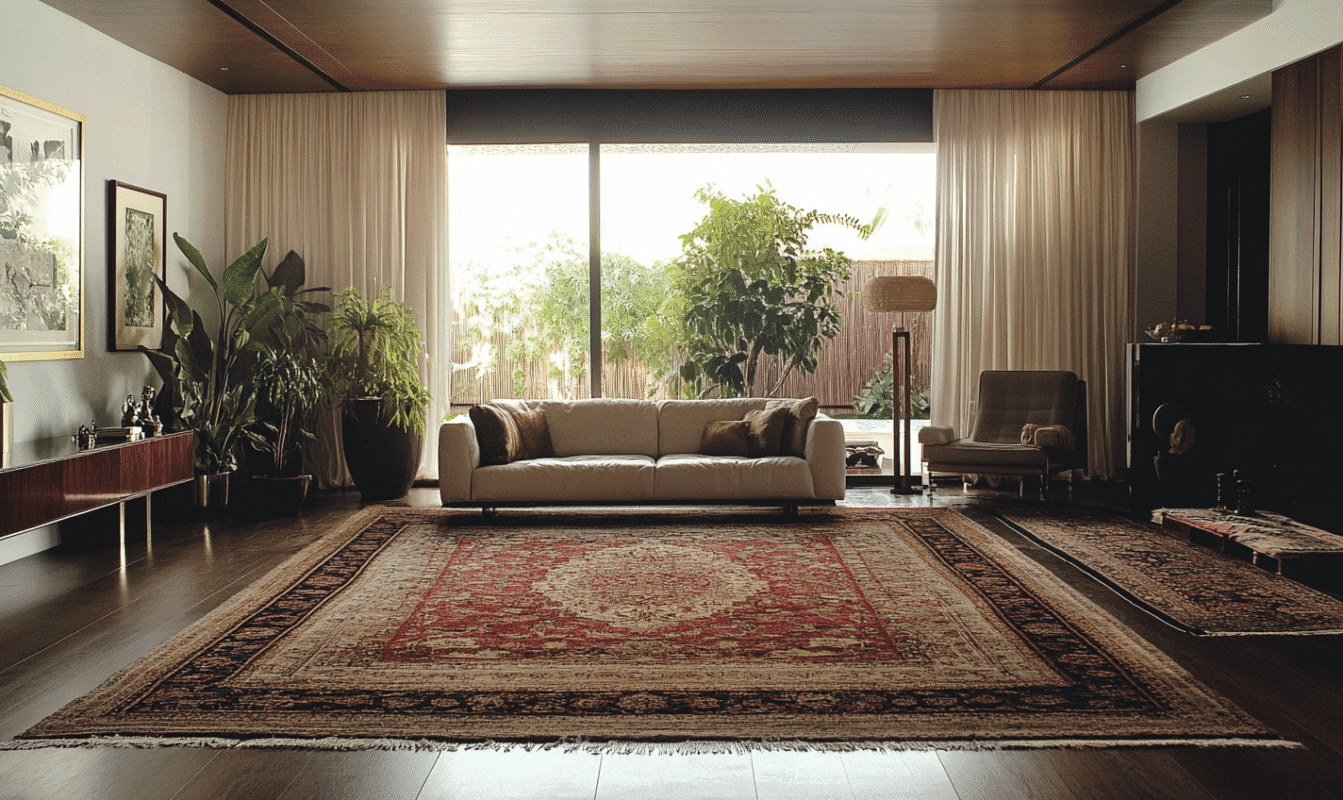
Proper maintenance ensures these masterpieces retain their beauty and structural integrity for generations:
Regular rotation equalises exposure to foot traffic and light, preventing uneven wear and colour fading. Professional cleaning every 3-5 years removes accumulated particulates that can abrade delicate fibres. Addressing minor repairs promptly prevents cascading deterioration that might compromise the rug’s integrity.
In Dubai’s climate, particular attention to humidity control protects against the microscopic expansion and contraction of fibres that can, over time, compromise structural integrity.
Key Takeaway: Rotate your Persian rugs every six months and maintain 40-50% humidity – these simple steps can add decades to their life.
Summing Up
The acquisition of genuine Persian rugs represents not merely a purchase but rather an inheritance of living history, a tangible connection to artistic traditions that have evolved over centuries. These extraordinary textiles bring not only visual splendour but also cultural resonance to the spaces they grace.
For those with the discernment to appreciate their subtle complexities, hand-knotted Persian masterpieces provide both aesthetic satisfaction and the profound pleasure of stewarding artistic excellence across generations. In Dubai’s most distinguished homes, these textiles serve as both foundation and focal point, grounding interior schemes with their timeless presence while simultaneously elevating them through unparalleled artistry.
When one invests in exceptional luxury rugs of Persian origin, one acquires not merely an object, but a narrative woven in wool and silk, a story that continues to unfold with each passing year in one’s care.
FAQs
How can I instantly distinguish a hand-knotted rug from a machine-made one?
Flip it over—hand-knotted rugs show individual knots clearly visible on the backing, whilst machine-made pieces have uniform, often latex-covered backs. Also check the fringe: genuine pieces have fringes that are part of the rug’s structure, not sewn on afterwards.
What size Persian rug offers the best investment potential?
Room-sized pieces (3×4 metres to 4×6 metres) from renowned centres appreciate most reliably as they’re practical for modern homes. Oversized palace carpets can be spectacular but have limited market demand. Runners and small accent pieces rarely appreciate significantly unless exceptionally rare.
How much should I expect to invest in a genuine hand-knotted Persian rug?
Entry-level authentic pieces start around AED 15,000 for smaller rugs, whilst investment-grade room-sized pieces range from AED 50,000 to AED 200,000. Museum-quality antiques command significantly more. Remember, you’re buying an appreciating asset, not just décor.
Can Persian rugs withstand Dubai’s climate-controlled environments?
Absolutely – consistent indoor conditions are actually ideal. The danger lies in extreme humidity fluctuations, not the climate itself. Maintain 40-50% humidity and avoid placing rugs near AC vents where condensation might occur.
Which Persian rug origins are most valuable for collectors?
Tabriz, Isfahan, Nain, and Qom consistently command premium prices. Kashan offers excellent value for exceptional quality. For investment purposes, stick to these established centres rather than trendy newcomers – provenance matters enormously in the secondary market.


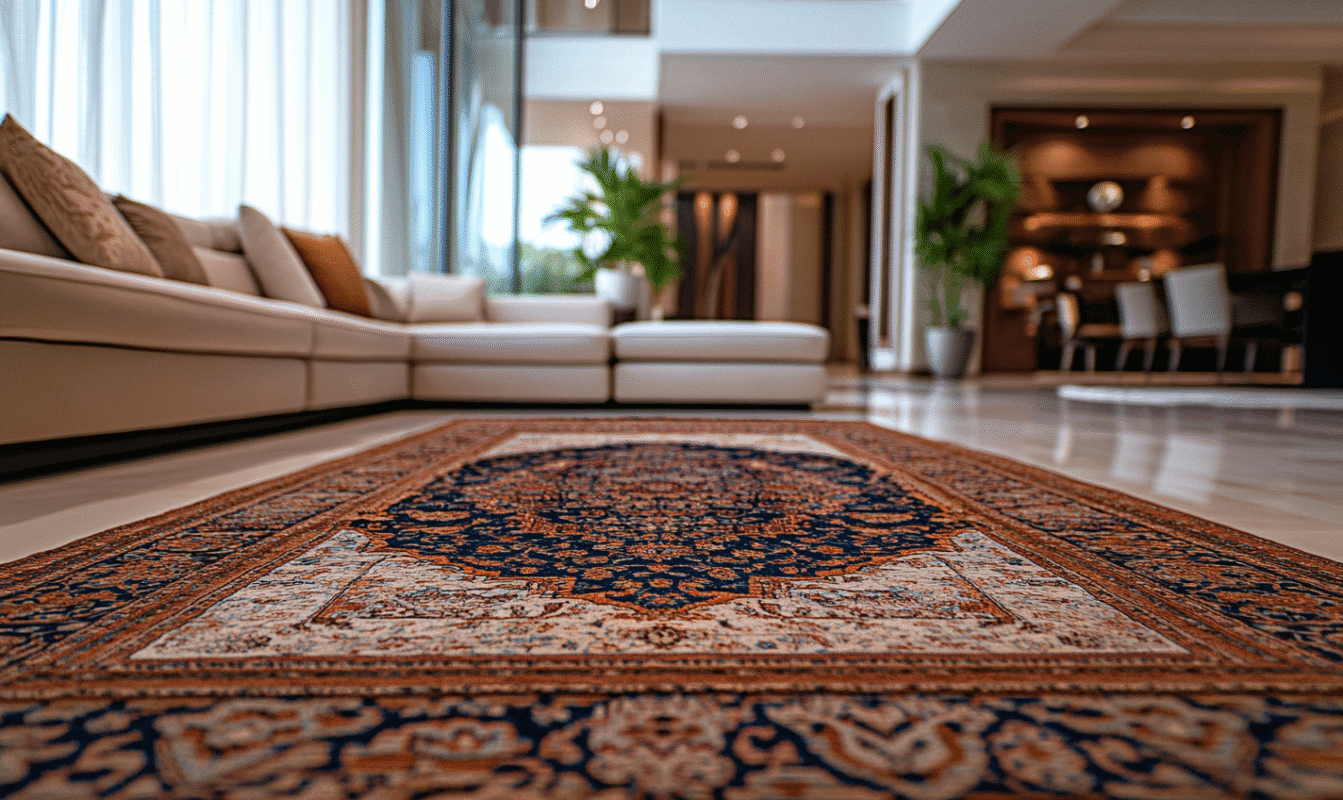
Get in touch
Want to get in touch? We'd love to hear from you. Email us at [email protected]
Sign Up for Newsletter